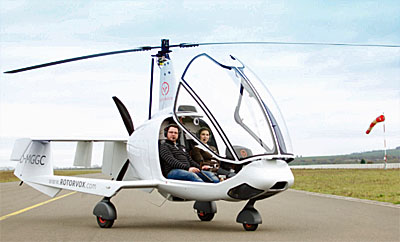
Besides LSA seaplanes, one area of furious development (and sales) is gyroplanes, the term modern industry prefers to “gyrocopter,” which was actually a branded name used since the days of Igor Benson. A new player, arriving on the scene about five years ago, is Rotorvox. Americans have not seen this aircraft but will soon get an opportunity at Sun ‘n Fun 2018 at Booth #30 in Paradise City. Demonstration flights will occur throughout the week. What Sets Apart Rotorvox? Structurally, the C2A is largely carbon-fiber monocoque construction. This is notably different than the majority of smooth-looking gyroplanes. Most are steel structure with a composite pod. Rotorvox’s fuselage is also engineered to provide a protective cell for the occupants. A few other side-by-side seating gyroplanes are on the market, including Cavalon from AutoGyro, the far and away market leader. Rotorvox’s version employs the carbon structure to provide such seating, which means it can double as a very inexpensive air ambulance.


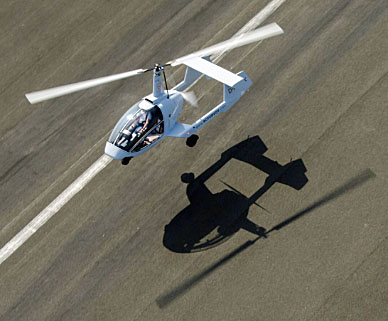 Besides LSA seaplanes, one area of furious development (and sales) is gyroplanes, the term modern industry prefers to "gyrocopter," which was actually a branded name used since the days of Igor Benson.
A new player, arriving on the scene about five years ago, is Rotorvox. Americans have not seen this aircraft but will soon get an opportunity at
Besides LSA seaplanes, one area of furious development (and sales) is gyroplanes, the term modern industry prefers to "gyrocopter," which was actually a branded name used since the days of Igor Benson.
A new player, arriving on the scene about five years ago, is Rotorvox. Americans have not seen this aircraft but will soon get an opportunity at 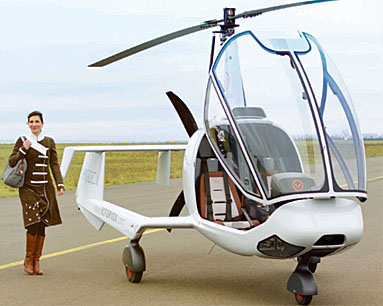
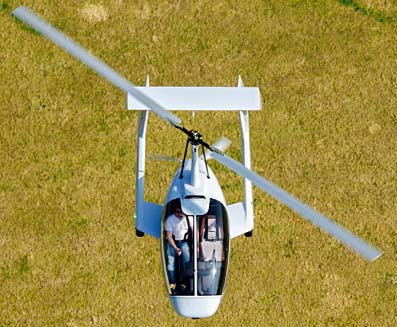 Rotorvox Aero will act as the U.S. importer and will display C2A in Lakeland from April 10
Rotorvox Aero will act as the U.S. importer and will display C2A in Lakeland from April 10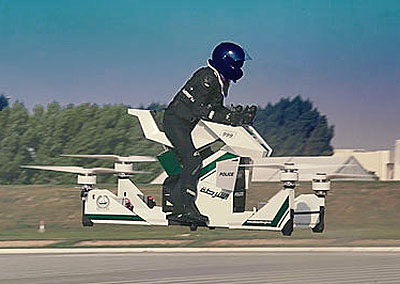 After you finish Easter Sunday dinner with the family, how about going out for a spin on your new Scorpion 3 Hoverbike? Is this merely an April fools joke?
Apparently not. Video appears to prove this machine, though with the state of the art in digital effects, anything you see can be fiction.
As many of us prepare for the start of
After you finish Easter Sunday dinner with the family, how about going out for a spin on your new Scorpion 3 Hoverbike? Is this merely an April fools joke?
Apparently not. Video appears to prove this machine, though with the state of the art in digital effects, anything you see can be fiction.
As many of us prepare for the start of 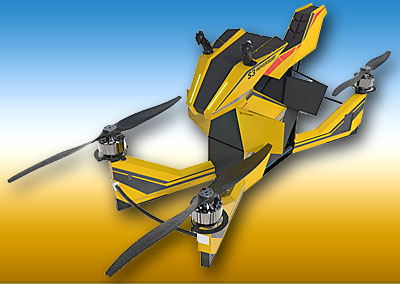 "Hoverbike Scorpion 3 is an extreme sports machine for those who are not afraid of height and speed," the
"Hoverbike Scorpion 3 is an extreme sports machine for those who are not afraid of height and speed," the 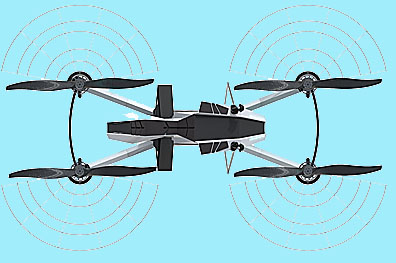 "Steel duct protection" is provided, evidently to keep soft body parts from contacting spinning props, and Scorpion 3 comes with a "Safety Lock." I suppose this keeps your 12-year-old nephew from taking it out for a spin while the rest of the family is digesting their Easter Sunday dinner.
"Steel duct protection" is provided, evidently to keep soft body parts from contacting spinning props, and Scorpion 3 comes with a "Safety Lock." I suppose this keeps your 12-year-old nephew from taking it out for a spin while the rest of the family is digesting their Easter Sunday dinner.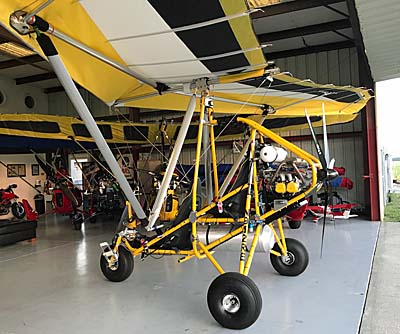
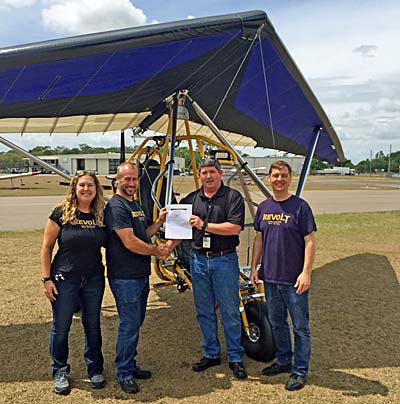
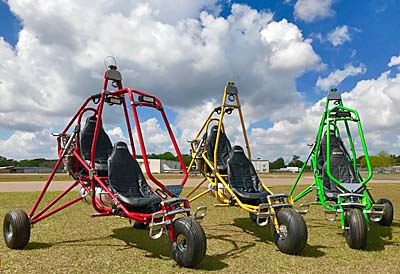 Dan Saunders aided Larry and Amy as they got ready for the inspection. Dan has already earned his credentials as he worked with Abid Farooqui of
Dan Saunders aided Larry and Amy as they got ready for the inspection. Dan has already earned his credentials as he worked with Abid Farooqui of 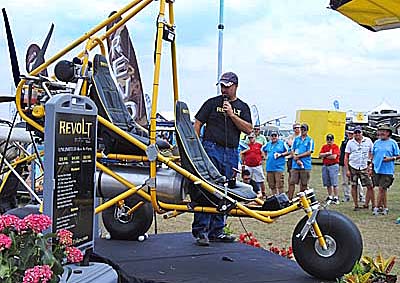
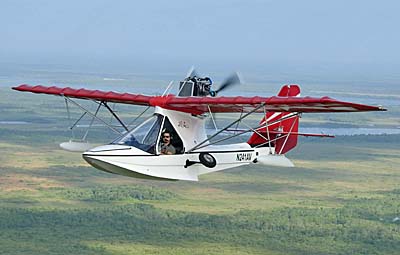 Today I got a good look at the new Aventura S-17 built in DeLand, Florida — also home of the Aerolite 103 and the DeLand Showcase …plus a large volume of sky diving.
In a word, S-17 is hot! One word is not enough, though. This light kit seaplane is also an unusually good value for a long-proven airframe that Aero Adventure has significantly beefed up.
The business is Aero Adventure, run by Alex Rolinski who bought the well-known design five years ago. He's a high-energy fellow who quit his bank officer job to go full time and the operation has plenty to keep him busy.
Today I got a good look at the new Aventura S-17 built in DeLand, Florida — also home of the Aerolite 103 and the DeLand Showcase …plus a large volume of sky diving.
In a word, S-17 is hot! One word is not enough, though. This light kit seaplane is also an unusually good value for a long-proven airframe that Aero Adventure has significantly beefed up.
The business is Aero Adventure, run by Alex Rolinski who bought the well-known design five years ago. He's a high-energy fellow who quit his bank officer job to go full time and the operation has plenty to keep him busy.
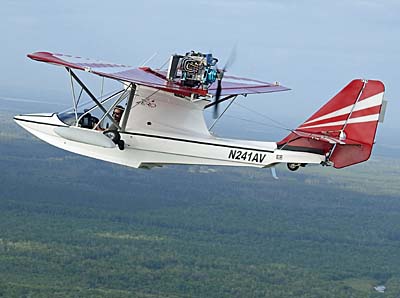 S-17 gets its name from the use of a
S-17 gets its name from the use of a 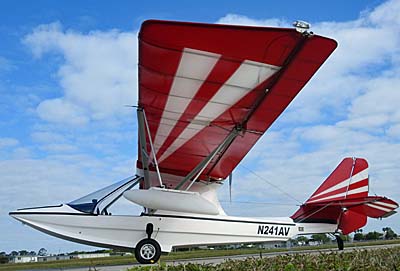 “I would put up this aircraft up against any other seaplane,” Alex stated. He indicated water runs are shortened and his climb rate increased such that S-17 can operate comfortably out of relatively small lakes.
OK, so S-17 performs well, but I imagine you didn’t forget the low price comment.
Earlier reports have described pricing for a basic Aventura kit that places a seaplane within reach of many budgets — from $50,000 to 60,000 (in early 2018), depending on equipment chosen. That’s an exceptional value that all can see.
“I would put up this aircraft up against any other seaplane,” Alex stated. He indicated water runs are shortened and his climb rate increased such that S-17 can operate comfortably out of relatively small lakes.
OK, so S-17 performs well, but I imagine you didn’t forget the low price comment.
Earlier reports have described pricing for a basic Aventura kit that places a seaplane within reach of many budgets — from $50,000 to 60,000 (in early 2018), depending on equipment chosen. That’s an exceptional value that all can see.
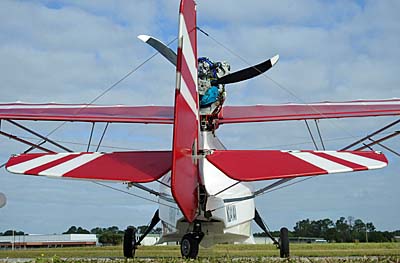 For $90,000 you can buy a very well equipped Aventura Including the 117-horsepower AeroMomentum
For $90,000 you can buy a very well equipped Aventura Including the 117-horsepower AeroMomentum 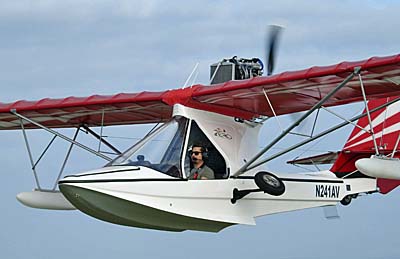 If you want to put your name in early for the one S-17 available at Sun’n Fun 2018, contact
If you want to put your name in early for the one S-17 available at Sun’n Fun 2018, contact 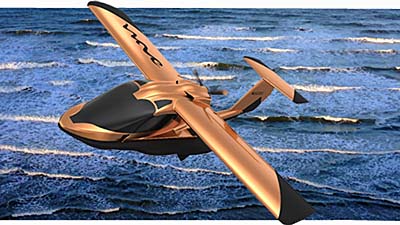
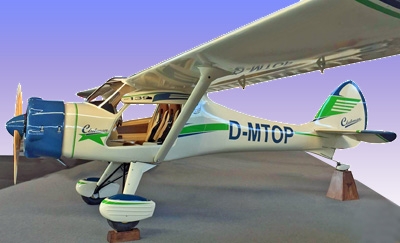
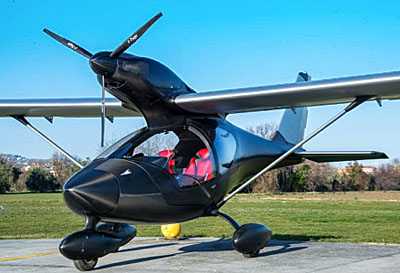
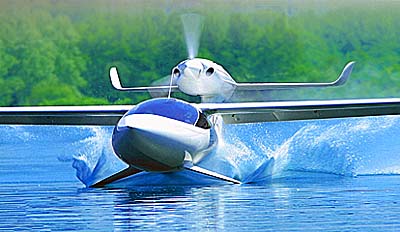
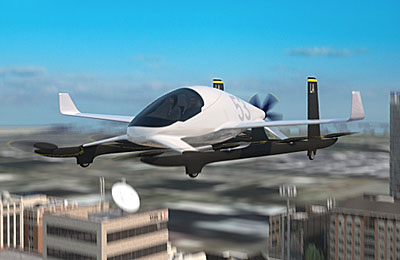 By the way, the use of technology seeks not only to save weight. New methods are used because they can, that is, developers don't need to jump through the regulatory hoops as demanded in Part 23. LSA developers can quickly implement new ideas and materials.
Boeing’s Aurora is one of a flock of new developments aimed at the air taxi trade but it could result in a sport model.
By the way, the use of technology seeks not only to save weight. New methods are used because they can, that is, developers don't need to jump through the regulatory hoops as demanded in Part 23. LSA developers can quickly implement new ideas and materials.
Boeing’s Aurora is one of a flock of new developments aimed at the air taxi trade but it could result in a sport model.
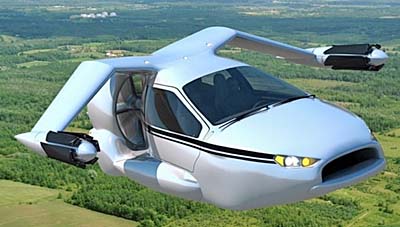
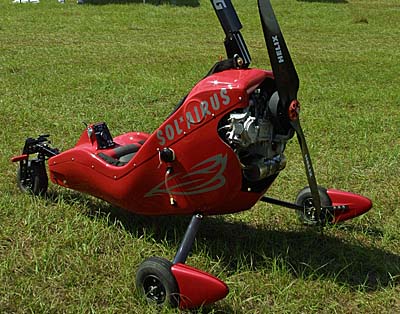
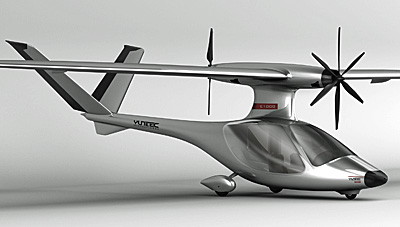
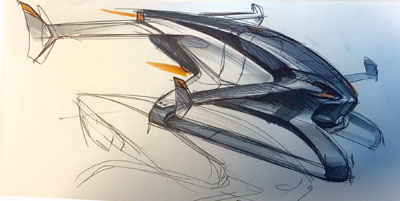
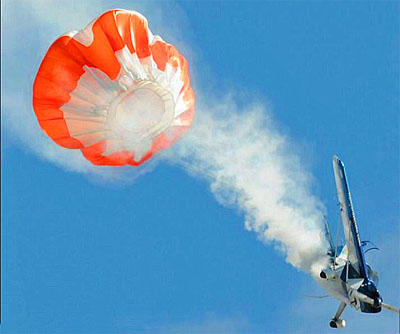
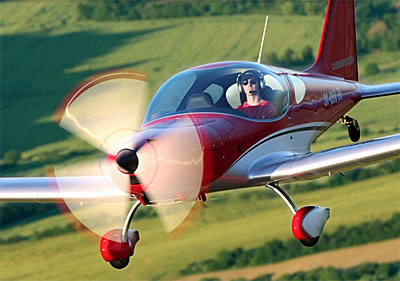
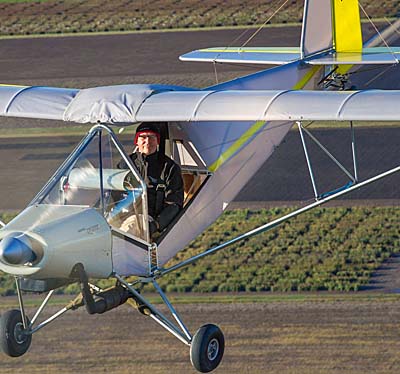 Since I saw what had to be Randy Schlitter's first appearance at Sun 'n Fun, and since he is celebrating the 35th anniversary of the first flight of his S3 single-place Coyote I …well, we've been in this game for a good amount of time. And a "good time" is exactly what it has been.
The videos (linked and below) capture the company and airplane story and I believe it is best to tell the Rans and Coyote story in this way.
Nonetheless, since I've had the pleasure to fly nearly all Rans designs over the years, I want to say that I am pleased this company and its one-of-a-kind owner have continued to pursue light aviation.
In Randy's own words from his Facebook page (where he is quite prolific), "This Saturday (March 17, 2018) is the 35th anniversary of the first flight of the Rans Coyote I ultralight. This craft launched Rans into the world of kit and certified planes."
He continued about the Coyote S-3, "
Since I saw what had to be Randy Schlitter's first appearance at Sun 'n Fun, and since he is celebrating the 35th anniversary of the first flight of his S3 single-place Coyote I …well, we've been in this game for a good amount of time. And a "good time" is exactly what it has been.
The videos (linked and below) capture the company and airplane story and I believe it is best to tell the Rans and Coyote story in this way.
Nonetheless, since I've had the pleasure to fly nearly all Rans designs over the years, I want to say that I am pleased this company and its one-of-a-kind owner have continued to pursue light aviation.
In Randy's own words from his Facebook page (where he is quite prolific), "This Saturday (March 17, 2018) is the 35th anniversary of the first flight of the Rans Coyote I ultralight. This craft launched Rans into the world of kit and certified planes."
He continued about the Coyote S-3, "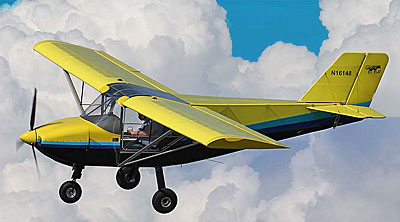
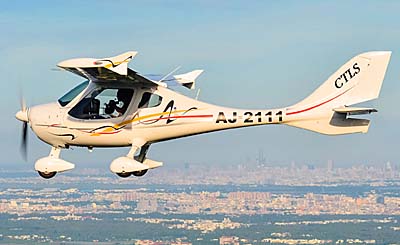 For most years of Light-Sport Aircraft one aircraft model convincingly lead the parade. That aircraft is broadly identified as the CT-series: CT2K, CTSW, CTLS, and CTLSi. Until
For most years of Light-Sport Aircraft one aircraft model convincingly lead the parade. That aircraft is broadly identified as the CT-series: CT2K, CTSW, CTLS, and CTLSi. Until 
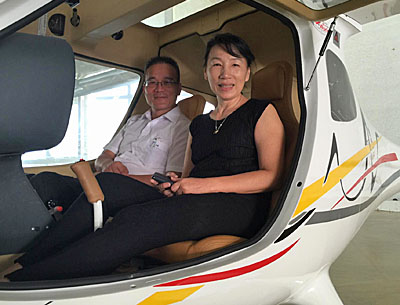
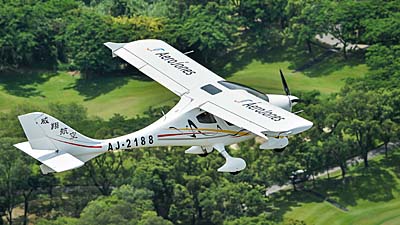 In addition to China, AeroJones Aviation is able to ship fully manufactured aircraft to other Asia-Pacific countries that accept ASTM standards for approvals, including Australia, New Zealand, Indonesia, Malaysia, Philippines, Japan, Korea, Thailand, plus additional countries in the region.
The German developer — since renamed Flight Design general aviation — will supply all other nations as AeroJones Aviation serves the Asia-Pacific market. In the United States, the German producer has been represented by
In addition to China, AeroJones Aviation is able to ship fully manufactured aircraft to other Asia-Pacific countries that accept ASTM standards for approvals, including Australia, New Zealand, Indonesia, Malaysia, Philippines, Japan, Korea, Thailand, plus additional countries in the region.
The German developer — since renamed Flight Design general aviation — will supply all other nations as AeroJones Aviation serves the Asia-Pacific market. In the United States, the German producer has been represented by 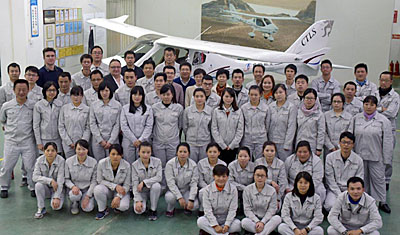
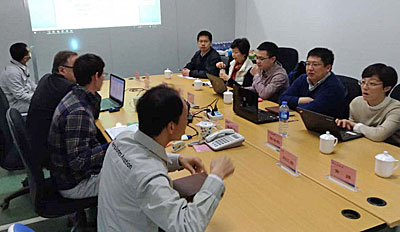
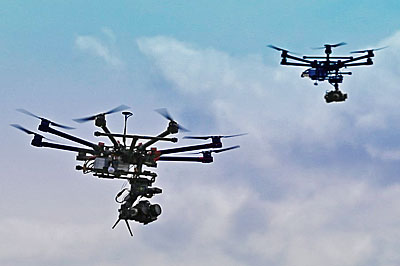 The aviation industry — led by a flock of alphabet member organizations — is clinking champagne glasses over the "defeat" of ATC Privatization. To some observers, this looks like a case of contented naval-gazing. Meanwhile, another development made the mainstream news today. It may not be reported in the aviation press.
Most of the above-referenced alphabets fought the battle — ostensibly against the airlines — over access to the air traffic control system that means so much to those flying, say, their Cirrus SR22 Turbo from Chicago to Washington, DC. IFR support from ATC may be somewhat less vital to recreational flyers.
While sport aviators also go cross country and a few employ the IFR system, most of us who fly for fun probably spend more time knocking around the airspace close to home, spotting fun things on the ground, giving short rides to friends, or pairing up with our flying buddies to trek off to a pancake breakfast or for a too-expensive hamburger. The truth is, we simply need ATC to enter Class B airspace less often.
The aviation industry — led by a flock of alphabet member organizations — is clinking champagne glasses over the "defeat" of ATC Privatization. To some observers, this looks like a case of contented naval-gazing. Meanwhile, another development made the mainstream news today. It may not be reported in the aviation press.
Most of the above-referenced alphabets fought the battle — ostensibly against the airlines — over access to the air traffic control system that means so much to those flying, say, their Cirrus SR22 Turbo from Chicago to Washington, DC. IFR support from ATC may be somewhat less vital to recreational flyers.
While sport aviators also go cross country and a few employ the IFR system, most of us who fly for fun probably spend more time knocking around the airspace close to home, spotting fun things on the ground, giving short rides to friends, or pairing up with our flying buddies to trek off to a pancake breakfast or for a too-expensive hamburger. The truth is, we simply need ATC to enter Class B airspace less often.
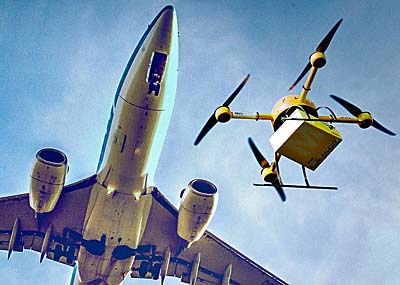 Over 1,000 people attended a conference on …get this — a completely (and genuinely) private air traffic control effort. What do I mean?
Here's today's lead in an
Over 1,000 people attended a conference on …get this — a completely (and genuinely) private air traffic control effort. What do I mean?
Here's today's lead in an 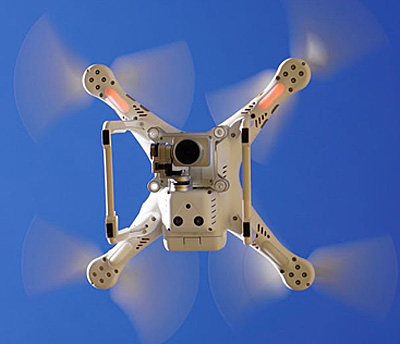
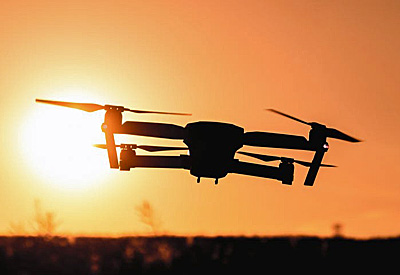 "For many of the engineering challenges, 'the technology to do this is basically off the shelf,' including communication principles and software repurposed from cellphone companies, according to Gur Kimchi, vice president of Amazon Prime Air," who added that "answers for some of the most vexing technical questions could 'take a year or two.'” Think how seamlessly you are handed off from cellphone tower to tower and you motor around the metro area.
Just "a year or two?" That may represent the difference between private groups doing things compared to FAA's publicly-funded, multi-decade Next Gen development.
Why the rush? "Recreational operators have registered more than a million unmanned aerial vehicles with the FAA, and many times that number are expected to use domestic airspace by the end of the decade. Some 70,000 U.S. drones are registered for commercial purposes.
"For many of the engineering challenges, 'the technology to do this is basically off the shelf,' including communication principles and software repurposed from cellphone companies, according to Gur Kimchi, vice president of Amazon Prime Air," who added that "answers for some of the most vexing technical questions could 'take a year or two.'” Think how seamlessly you are handed off from cellphone tower to tower and you motor around the metro area.
Just "a year or two?" That may represent the difference between private groups doing things compared to FAA's publicly-funded, multi-decade Next Gen development.
Why the rush? "Recreational operators have registered more than a million unmanned aerial vehicles with the FAA, and many times that number are expected to use domestic airspace by the end of the decade. Some 70,000 U.S. drones are registered for commercial purposes.

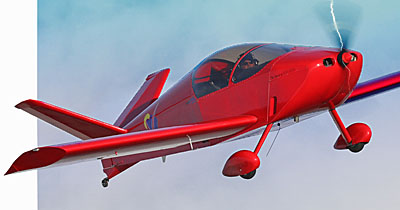
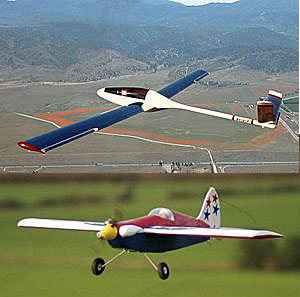
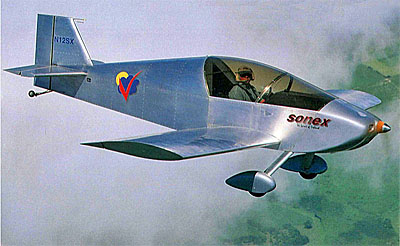 After more than 20 years in the homebuilder enterprise, John took a first flight on February 28, 1998 in a completely new aircraft: Sonex serial number 1, or SX1 (image from EAA Sport Aviation).
John Monnett is amazingly productive. Not only did he create aircraft design after design, he also delved deeply into powerplants.
Sonex has long been a very rare airframe company that also makes an engine that works very well. More than that, Sonex also offers the AeroVee engine as a kit, too (
After more than 20 years in the homebuilder enterprise, John took a first flight on February 28, 1998 in a completely new aircraft: Sonex serial number 1, or SX1 (image from EAA Sport Aviation).
John Monnett is amazingly productive. Not only did he create aircraft design after design, he also delved deeply into powerplants.
Sonex has long been a very rare airframe company that also makes an engine that works very well. More than that, Sonex also offers the AeroVee engine as a kit, too (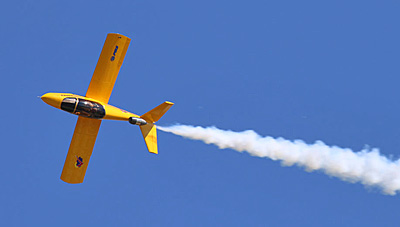 Along the way, John and his growing team at Sonex Aircraft — these days headed by the very capable Mark Schaible — experimented with electric propulsion, dabbled in military drone aircraft, and even added a "jet for the rest of us" called SubSonex …always a clever aircraft name ready to emerge from this
Along the way, John and his growing team at Sonex Aircraft — these days headed by the very capable Mark Schaible — experimented with electric propulsion, dabbled in military drone aircraft, and even added a "jet for the rest of us" called SubSonex …always a clever aircraft name ready to emerge from this 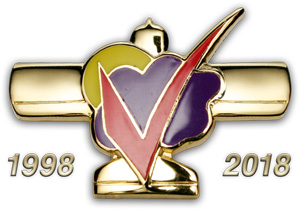
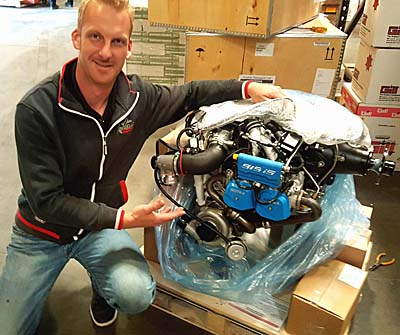 Pilots and builders seeking more power can welcome the Rotax 915iS fuel-injected, turbo-charged, intercooler-equipped 135-horsepower engine. Talk about a kick in the pants!
The engine recently
Pilots and builders seeking more power can welcome the Rotax 915iS fuel-injected, turbo-charged, intercooler-equipped 135-horsepower engine. Talk about a kick in the pants!
The engine recently 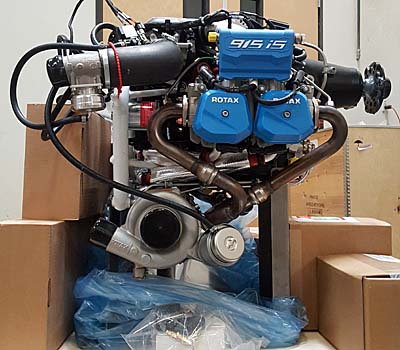 Bryan enthusiastically reported, "I had a recent opportunity to fly with the 915is on Rotax guru, Ronnie Smith's Rans S-7 that he is testing. I was very impressed!" Ronnie, proprietor of
Bryan enthusiastically reported, "I had a recent opportunity to fly with the 915is on Rotax guru, Ronnie Smith's Rans S-7 that he is testing. I was very impressed!" Ronnie, proprietor of  For pilots, builders, or repair shops interested in information on the 915is, or for those ready to place an order please visit the California Power Systems
For pilots, builders, or repair shops interested in information on the 915is, or for those ready to place an order please visit the California Power Systems 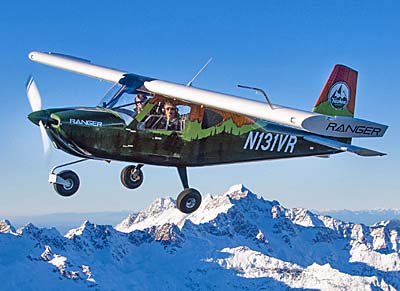 From Washington State arrives a fresh, new airplane created from scratch to enter the Special LSA space. You don't know the company but you may know the people, at least indirectly. Welcome to Vashon and their new Ranger R7!
Ranger R7 is an all-metal, two-place, high-wing, single engine airplane equipped with tricycle landing gear and castering nose wheel. The company says Ranger has been in development for five years and has been flying for more than two.
Vashon Aircraft was founded by John Torode, and the Ranger R7 was designed by Pacific Northwest aeronautical engineer, Ken Krueger. Does the name Torode sound familiar? It should. This is the man behind Dynon Avionics. Other key players are General Manager Scott Taylor and Marketing Manager Amy Bellesheim.
From Washington State arrives a fresh, new airplane created from scratch to enter the Special LSA space. You don't know the company but you may know the people, at least indirectly. Welcome to Vashon and their new Ranger R7!
Ranger R7 is an all-metal, two-place, high-wing, single engine airplane equipped with tricycle landing gear and castering nose wheel. The company says Ranger has been in development for five years and has been flying for more than two.
Vashon Aircraft was founded by John Torode, and the Ranger R7 was designed by Pacific Northwest aeronautical engineer, Ken Krueger. Does the name Torode sound familiar? It should. This is the man behind Dynon Avionics. Other key players are General Manager Scott Taylor and Marketing Manager Amy Bellesheim.
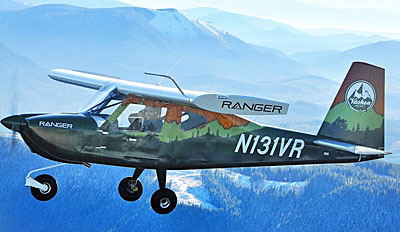 The team picked the name Vashon Aircraft because "we wanted to give it a Pacific Northwest rugged, utilitarian 'jeep' feel," said Bellesheim. "You can go out in nature, get dirty, and get back in the airplane without worrying about messing the airplane up. We live among national parks so the name Ranger comes from [these] parks. We chose R7 because it sounds modern and cool."
The design goal appears to be a rugged outdoor-action airplane but with sophiciated avionics, a natural if unlikely pairing resulting from the close relationship to
The team picked the name Vashon Aircraft because "we wanted to give it a Pacific Northwest rugged, utilitarian 'jeep' feel," said Bellesheim. "You can go out in nature, get dirty, and get back in the airplane without worrying about messing the airplane up. We live among national parks so the name Ranger comes from [these] parks. We chose R7 because it sounds modern and cool."
The design goal appears to be a rugged outdoor-action airplane but with sophiciated avionics, a natural if unlikely pairing resulting from the close relationship to 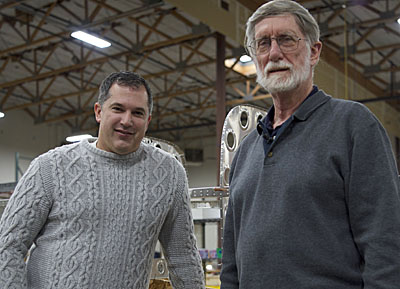
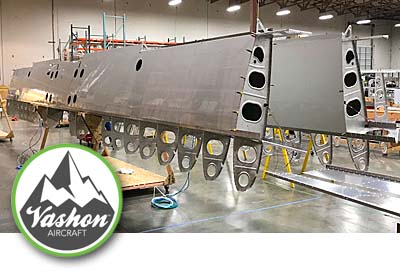 Vashon claims to be one of the first companies to form pre-painted metal. "We purchase sheets of stock aluminum that have been painted and then form them into parts using a modern turret punch, laser, and hydropress technology. Because of that we have taken a whole step out of the airplane building process by eliminating the need to paint after assembly," reported Bellesheim. "We also spent a lot of time developing painted rivets so that they match the airplane."
For power, Vashon chose
Vashon claims to be one of the first companies to form pre-painted metal. "We purchase sheets of stock aluminum that have been painted and then form them into parts using a modern turret punch, laser, and hydropress technology. Because of that we have taken a whole step out of the airplane building process by eliminating the need to paint after assembly," reported Bellesheim. "We also spent a lot of time developing painted rivets so that they match the airplane."
For power, Vashon chose 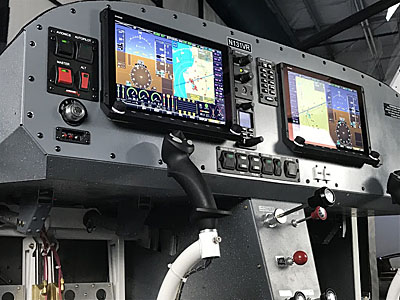 The prototype Ranger has "canvas slate gray upholstery, light gray floor and sidewalls, a gray instrument panel, and gray center console. At higher price points, you can add other colors and accents. As they move into producing additional aircraft, "the colors for interior will be either gray or black or a combination of both."
In progressive upgrades, you can get more goodies in their "Glacier" package for $107,500; or their "Redwood" upgrade for $114,500, or the "Appalachian" for $129,500, a variant described as their "flight school model."
"We won’t take deposits," said Vashon. "We won’t take your money until we have an airplane for you."
The prototype Ranger has "canvas slate gray upholstery, light gray floor and sidewalls, a gray instrument panel, and gray center console. At higher price points, you can add other colors and accents. As they move into producing additional aircraft, "the colors for interior will be either gray or black or a combination of both."
In progressive upgrades, you can get more goodies in their "Glacier" package for $107,500; or their "Redwood" upgrade for $114,500, or the "Appalachian" for $129,500, a variant described as their "flight school model."
"We won’t take deposits," said Vashon. "We won’t take your money until we have an airplane for you."
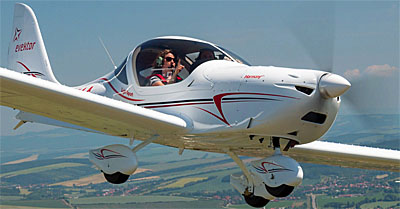 Forever,
Forever, 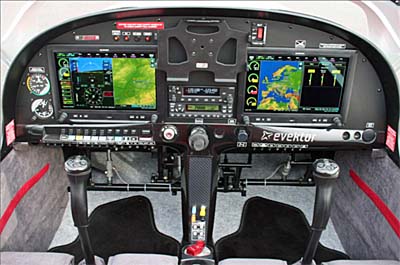 SportStar RTC G3X Touch is equipped with two 10.6-inch G3X displays offering dual Air Data and Attitude and Heading Reference System (ADAHRS) and Engine Monitoring System (EMS). SportStar RTC further includes a Garmin GNC 255 Nav/Com radio and a Garmin GTX328 transponder. The Kansas company's Aera 500 is optional.
The first SportStar RTC so wonderfully equipped will be delivered to Aeroklub Montpelier in France this February with a second in March. Evektor reported having another 10 such aircraft in production.
"SportStar RTC enjoys growing popularity among flight training organizations and air clubs globally," stated the company.
SportStar RTC G3X Touch is equipped with two 10.6-inch G3X displays offering dual Air Data and Attitude and Heading Reference System (ADAHRS) and Engine Monitoring System (EMS). SportStar RTC further includes a Garmin GNC 255 Nav/Com radio and a Garmin GTX328 transponder. The Kansas company's Aera 500 is optional.
The first SportStar RTC so wonderfully equipped will be delivered to Aeroklub Montpelier in France this February with a second in March. Evektor reported having another 10 such aircraft in production.
"SportStar RTC enjoys growing popularity among flight training organizations and air clubs globally," stated the company.
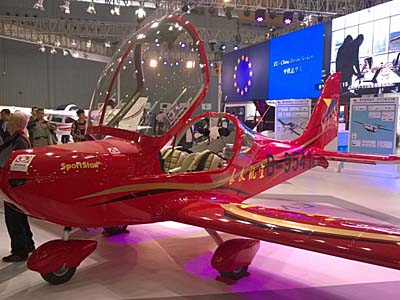 "Evektor delivers to China its CAAC Certified Light Sport Aircraft SportStar SL that enjoys growing popularity among the air clubs on the Chinese market," said the company. "A regular CAAC audit reconfirmed Evektor is in full compliance with all CAAC requirements for further deliveries of SportStar SL to the Chinese market."
Evektor has now been “quality audited by the CAAC of China together with aviation production certified by Czech Civil Aviation Authority and the European EASA according to Part 21 … [proving] the basis for the quality of Evektor aircraft”, stated Jaromír Matuška, Quality Manager of Evektor-Aerotechnik.
In the USA, Evektor is represented by Art Tarola and his
"Evektor delivers to China its CAAC Certified Light Sport Aircraft SportStar SL that enjoys growing popularity among the air clubs on the Chinese market," said the company. "A regular CAAC audit reconfirmed Evektor is in full compliance with all CAAC requirements for further deliveries of SportStar SL to the Chinese market."
Evektor has now been “quality audited by the CAAC of China together with aviation production certified by Czech Civil Aviation Authority and the European EASA according to Part 21 … [proving] the basis for the quality of Evektor aircraft”, stated Jaromír Matuška, Quality Manager of Evektor-Aerotechnik.
In the USA, Evektor is represented by Art Tarola and his 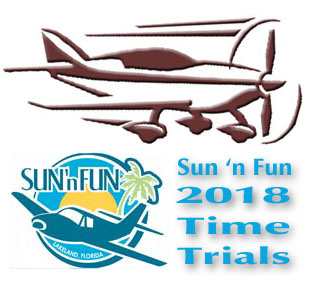 The great spring airshow everyone knows as
The great spring airshow everyone knows as 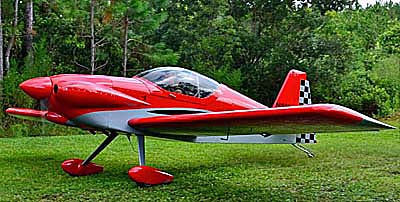 Instead, Craig explained, "Both contests require sharp navigation and precision course heading changes to achieve the best results."
"A modest, non-refundable entry fee will be charged to cover the cost of trophies and incidentals," however, this is primarily a volunteer activity.
Knowledgeable narrators will man the announcer's microphone so that the crowd can follow the action, Craig said. The Sport 20 Time Trials sounds good for vendors hoping to promote their aircraft and it's also good for customers who want to compare performance of various models of interest to them.
Instead, Craig explained, "Both contests require sharp navigation and precision course heading changes to achieve the best results."
"A modest, non-refundable entry fee will be charged to cover the cost of trophies and incidentals," however, this is primarily a volunteer activity.
Knowledgeable narrators will man the announcer's microphone so that the crowd can follow the action, Craig said. The Sport 20 Time Trials sounds good for vendors hoping to promote their aircraft and it's also good for customers who want to compare performance of various models of interest to them.
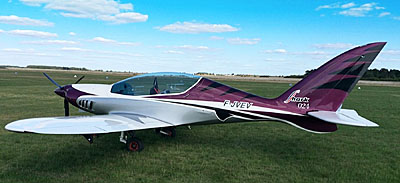 Competitors will run a 20-mile course for time, starting from the main runway at Sun 'n Fun. Launching in 30-second intervals, the timing starts one mile after takeoff so aircraft are up to speed. "Recovery" or their landing after running the course will likely happen at the Paradise City turf runway.
An observer will be positioned at each turn point to provide assistance to anyone running the course. A helicopter will also be aloft for additional safety, Craig indicated.
The takeoff and the finish line will all be highly visible to Sun 'n Fun crowds so this represents a wonderful opportunity to promote your wares or to learn more about an airplane that may interest you.
Competitors will run a 20-mile course for time, starting from the main runway at Sun 'n Fun. Launching in 30-second intervals, the timing starts one mile after takeoff so aircraft are up to speed. "Recovery" or their landing after running the course will likely happen at the Paradise City turf runway.
An observer will be positioned at each turn point to provide assistance to anyone running the course. A helicopter will also be aloft for additional safety, Craig indicated.
The takeoff and the finish line will all be highly visible to Sun 'n Fun crowds so this represents a wonderful opportunity to promote your wares or to learn more about an airplane that may interest you.
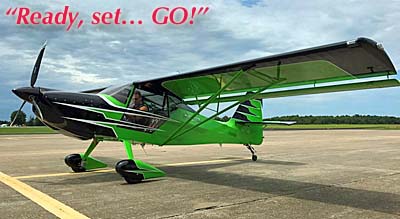 This is the sixth year of the Sprint 20 Time Trials, but this is the first year to feature a category for Light-Sport and light kit aircraft. If you are interested or your company wishes to participate — or if you want your company to participate so you can better understand their aircraft — I encourage you to
This is the sixth year of the Sprint 20 Time Trials, but this is the first year to feature a category for Light-Sport and light kit aircraft. If you are interested or your company wishes to participate — or if you want your company to participate so you can better understand their aircraft — I encourage you to 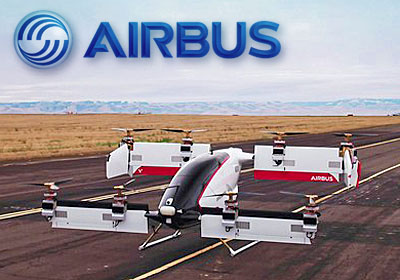 According to a
According to a 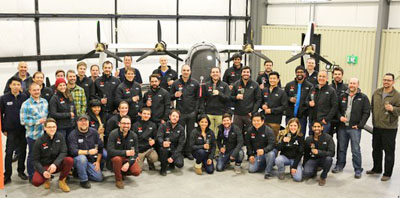
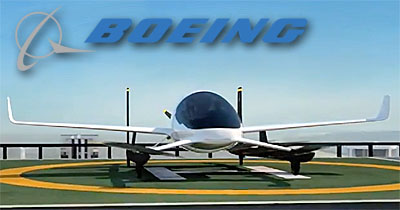 I see nothing wrong with that, but those of us involved with recreational flying prefer to do the piloting, to enjoy the skies in our own personal way.
However, does that mean you would not fly a quad- or octocopter, especially if it was mass produced and affordable?
What if this thing could be flown with regular controls like the ultralight, light kit, or LSA you presently love? What if it turned out to be a hoot to fly? What it if had capabilities beyond your fixed wing, gyroplane, trike, or powered parachute. My own radio-controlled drone flies well in wind. Its gyro stabilized camera is amazingly smooth even in gusty conditions …and mine is a antique, a whole two years old.
I see nothing wrong with that, but those of us involved with recreational flying prefer to do the piloting, to enjoy the skies in our own personal way.
However, does that mean you would not fly a quad- or octocopter, especially if it was mass produced and affordable?
What if this thing could be flown with regular controls like the ultralight, light kit, or LSA you presently love? What if it turned out to be a hoot to fly? What it if had capabilities beyond your fixed wing, gyroplane, trike, or powered parachute. My own radio-controlled drone flies well in wind. Its gyro stabilized camera is amazingly smooth even in gusty conditions …and mine is a antique, a whole two years old.
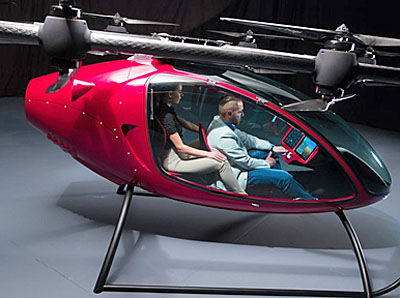
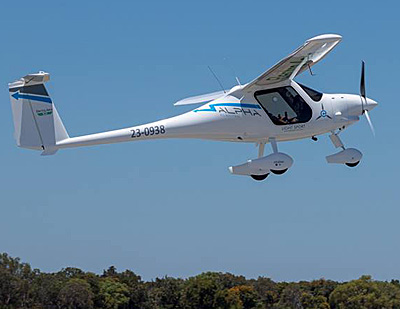
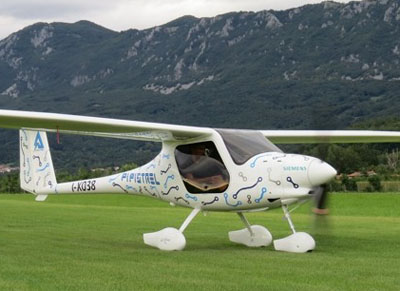 Regardless, FAA's word choice not only prevented turbine engines but unknowingly prevented electric propulsion as well. Few considered electric motors as powerplants in 2004 so FAA might be forgiven yet that one word "reciprocating" now turns out to be slowing progress.
More accurately, it slows things in the USA …but not in Australia or Canada, or many European countries, or China, or…
Agency staff admit they never intended to preclude electric but "now it's the regulation and we can't change it without a major effort." (
Regardless, FAA's word choice not only prevented turbine engines but unknowingly prevented electric propulsion as well. Few considered electric motors as powerplants in 2004 so FAA might be forgiven yet that one word "reciprocating" now turns out to be slowing progress.
More accurately, it slows things in the USA …but not in Australia or Canada, or many European countries, or China, or…
Agency staff admit they never intended to preclude electric but "now it's the regulation and we can't change it without a major effort." (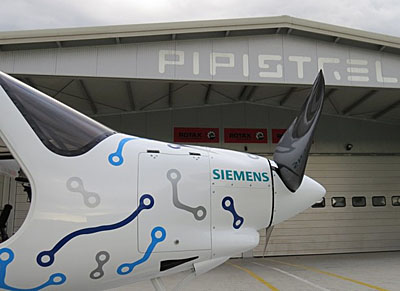 This Alpha Electro "is a normal production Pipistrel
This Alpha Electro "is a normal production Pipistrel  As Rob reported, "Electro is powered by a 60-kW electric motor equivalent to an 80-horsepower gasoline engine. Roughly the size of a Cessna 150, the Alpha Electro weighs considerably less, just over 1,200 pounds. At cruise, Electro tops out at 85 mph."
The Southern Hemisphere flight school got a rush of news coverage in Australia. Here's a series or reports that also shows the aircraft in flight. You can hear it as well.
https://youtu.be/xPN5VDHzPNo
As Rob reported, "Electro is powered by a 60-kW electric motor equivalent to an 80-horsepower gasoline engine. Roughly the size of a Cessna 150, the Alpha Electro weighs considerably less, just over 1,200 pounds. At cruise, Electro tops out at 85 mph."
The Southern Hemisphere flight school got a rush of news coverage in Australia. Here's a series or reports that also shows the aircraft in flight. You can hear it as well.
https://youtu.be/xPN5VDHzPNo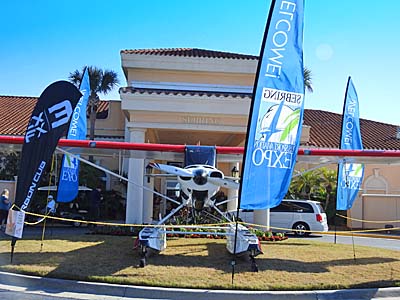 We started a few shows back doing a drive-by shooting (except in a good way). In this effort, we pair up on a golf cart with Videoman Dave running the camera and yours truly trying my best to keep up and not flub my lines.
All this is extemporaneous (a fancy word for un-scripted) so if I stumble now and again with an airplane fact, please pardon the error. We like to knock these out and that doesn't allow for retakes. I think I got most of it right or at least Dave managed to edit out any disqualifying errors I may have made.
According to new
We started a few shows back doing a drive-by shooting (except in a good way). In this effort, we pair up on a golf cart with Videoman Dave running the camera and yours truly trying my best to keep up and not flub my lines.
All this is extemporaneous (a fancy word for un-scripted) so if I stumble now and again with an airplane fact, please pardon the error. We like to knock these out and that doesn't allow for retakes. I think I got most of it right or at least Dave managed to edit out any disqualifying errors I may have made.
According to new 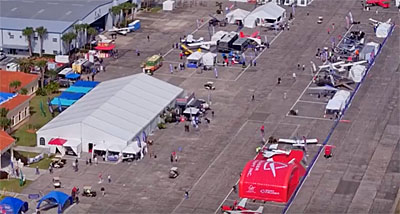 Overall activities were aided tremendously by a small army of 300 volunteers. Many airshow regulars have often heard that these shows cannot happen without those volunteers so when the chance presents itself, give a thank-you to any volunteer you meet.
Over 700 people attended more than 60 forums in four tents (though some may have been counted twice if they attended more than one).
Nearly 1,000 kids were transported to Sebring's Expo as part of their YAZ, or Young Aviators Zone. I observed several of these flocks and it's always great to see young people being exposed to aviation.
Overall activities were aided tremendously by a small army of 300 volunteers. Many airshow regulars have often heard that these shows cannot happen without those volunteers so when the chance presents itself, give a thank-you to any volunteer you meet.
Over 700 people attended more than 60 forums in four tents (though some may have been counted twice if they attended more than one).
Nearly 1,000 kids were transported to Sebring's Expo as part of their YAZ, or Young Aviators Zone. I observed several of these flocks and it's always great to see young people being exposed to aviation.
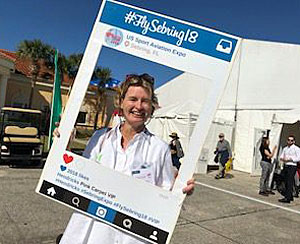
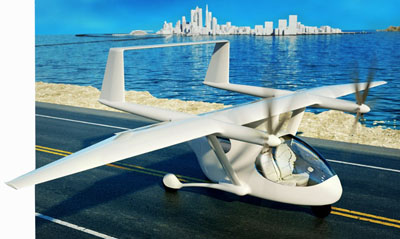 Let's be clear. Boeing, Airbus, Google, Amazon, and other immensely deep pockets are not seeking to build fun flying machines for you and me. Well… not initially, at least. And even that statement is somewhat wrong based on the development of the
Let's be clear. Boeing, Airbus, Google, Amazon, and other immensely deep pockets are not seeking to build fun flying machines for you and me. Well… not initially, at least. And even that statement is somewhat wrong based on the development of the 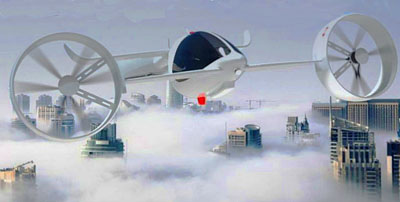 The billionaire class dreams much bigger, probably thinking they can sell many thousands of aircraft or much higher cost aircraft than we recreational aviators want to buy. Most will center on doing transportation or package delivery. Most will not seek to increase your weekend flying fun.
You know what, though? Neither did the Wright Brothers or the other pioneers of flight have recreation in mind. Even
The billionaire class dreams much bigger, probably thinking they can sell many thousands of aircraft or much higher cost aircraft than we recreational aviators want to buy. Most will center on doing transportation or package delivery. Most will not seek to increase your weekend flying fun.
You know what, though? Neither did the Wright Brothers or the other pioneers of flight have recreation in mind. Even 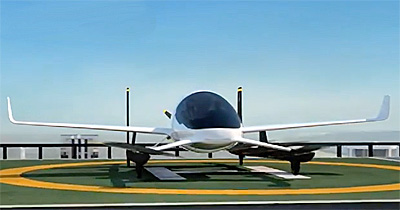 As with most developments in a dynamic economy, spin-offs happen. One idea fails but produces another that catches fire. Discoveries in one field can lead to progress in a seemingly unrelated field.
I don't think it's too far-fetched to think we may be on the cusp of a new revolution in flight.
As with most developments in a dynamic economy, spin-offs happen. One idea fails but produces another that catches fire. Discoveries in one field can lead to progress in a seemingly unrelated field.
I don't think it's too far-fetched to think we may be on the cusp of a new revolution in flight.
 This history — which I would not trade for anything — leads me to wonder if we might be on the verge of a new chapter in flying for fun. Could it be electric? Might it be a multi-copter? Is it possible the next aviation revolution will not look like those aircraft that previously gave me pleasure? Perhaps!
Will that still be "real" flying? Such a judgment depends on the beholder. I considered hang gliding to be extremely "real" flying. I was similarly inspired by ultralights (even if I did lose some hearing after flying with two-stroke engines). Likewise, I've been highly impressed with LSA designers who have thought up dozens of variations, some of which are remarkably handsome aircraft.
This history — which I would not trade for anything — leads me to wonder if we might be on the verge of a new chapter in flying for fun. Could it be electric? Might it be a multi-copter? Is it possible the next aviation revolution will not look like those aircraft that previously gave me pleasure? Perhaps!
Will that still be "real" flying? Such a judgment depends on the beholder. I considered hang gliding to be extremely "real" flying. I was similarly inspired by ultralights (even if I did lose some hearing after flying with two-stroke engines). Likewise, I've been highly impressed with LSA designers who have thought up dozens of variations, some of which are remarkably handsome aircraft.
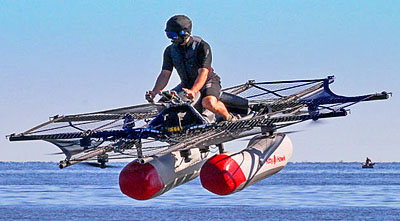 Each time the new kid arrived on the block, somebody from the previous generation was dismissive. I'm trying not to be one of those as I observe these new creations. I hope you will join me in keeping an open mind.
I can hear multiple gripes about the Kitty Hawk Flyer in the video below but I have to say that I'd love to give this thing a try once I believe it be sufficiently wrung out by braver pilots than me. Honestly, on a hot Florida day while having fun with friends at one of the state's many lakes, Flyer looks like a hoot. The video below is rather Hollywoodized but nonetheless shows how developments by big boys with their pockets bulging with money could… just might lead to things I'd enjoy flying in the future.
https://youtu.be/mMWh4W1C2PM
Each time the new kid arrived on the block, somebody from the previous generation was dismissive. I'm trying not to be one of those as I observe these new creations. I hope you will join me in keeping an open mind.
I can hear multiple gripes about the Kitty Hawk Flyer in the video below but I have to say that I'd love to give this thing a try once I believe it be sufficiently wrung out by braver pilots than me. Honestly, on a hot Florida day while having fun with friends at one of the state's many lakes, Flyer looks like a hoot. The video below is rather Hollywoodized but nonetheless shows how developments by big boys with their pockets bulging with money could… just might lead to things I'd enjoy flying in the future.
https://youtu.be/mMWh4W1C2PM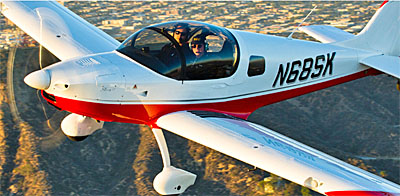 Special deals are unusual in aviation, an industry of hand-built flying machines sold in modest quantities. This is the paramount challenge in keeping aviation affordable. Challenging, but not impossible.
Mainly due to the fluctuation in government currencies,
Special deals are unusual in aviation, an industry of hand-built flying machines sold in modest quantities. This is the paramount challenge in keeping aviation affordable. Challenging, but not impossible.
Mainly due to the fluctuation in government currencies, 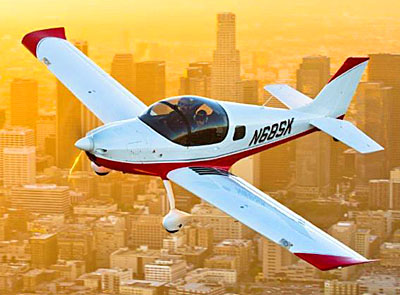 The ready-to-fly SLSA Sling 2 runs from $132,000 for a basic model to $165,000 for a "
The ready-to-fly SLSA Sling 2 runs from $132,000 for a basic model to $165,000 for a " Act before March 1st — and save about 10%, making the offer worth about $4,000 to over $13,000 depending on which model and type interests you. Call 424-241-0341 (west coast time) or send an
Act before March 1st — and save about 10%, making the offer worth about $4,000 to over $13,000 depending on which model and type interests you. Call 424-241-0341 (west coast time) or send an 
 Sebastien Heintz of
Sebastien Heintz of  Deane's STOL CH 701 is powered by a 130-horsepower
Deane's STOL CH 701 is powered by a 130-horsepower 
 Because we are about 50 miles away, the sound of these (count 'em) 27 rocket motors traveled to Daytona in about four minutes. The rumbling from those huge motors throbbed on and on, longer than any launch I can remember. The winds need to be rather calm for the sound to travel this far and today we got lucky.
Cool! Go private space companies like SpaceX, Blue Origin, and others. I'm a NASA fan, too, but I want to see these private enterprises take the baton and race outward to the planets …and it's happening.
I just hope that Tesla can find a parking spot when it gets to Mars orbit.
https://youtu.be/RSc__x0rO9k
https://youtu.be/Tk338VXcb24
Because we are about 50 miles away, the sound of these (count 'em) 27 rocket motors traveled to Daytona in about four minutes. The rumbling from those huge motors throbbed on and on, longer than any launch I can remember. The winds need to be rather calm for the sound to travel this far and today we got lucky.
Cool! Go private space companies like SpaceX, Blue Origin, and others. I'm a NASA fan, too, but I want to see these private enterprises take the baton and race outward to the planets …and it's happening.
I just hope that Tesla can find a parking spot when it gets to Mars orbit.
https://youtu.be/RSc__x0rO9k
https://youtu.be/Tk338VXcb24 Is your aviation horizon is getting confused by
Is your aviation horizon is getting confused by 
 Not to be left out by their European rival, this week
Not to be left out by their European rival, this week